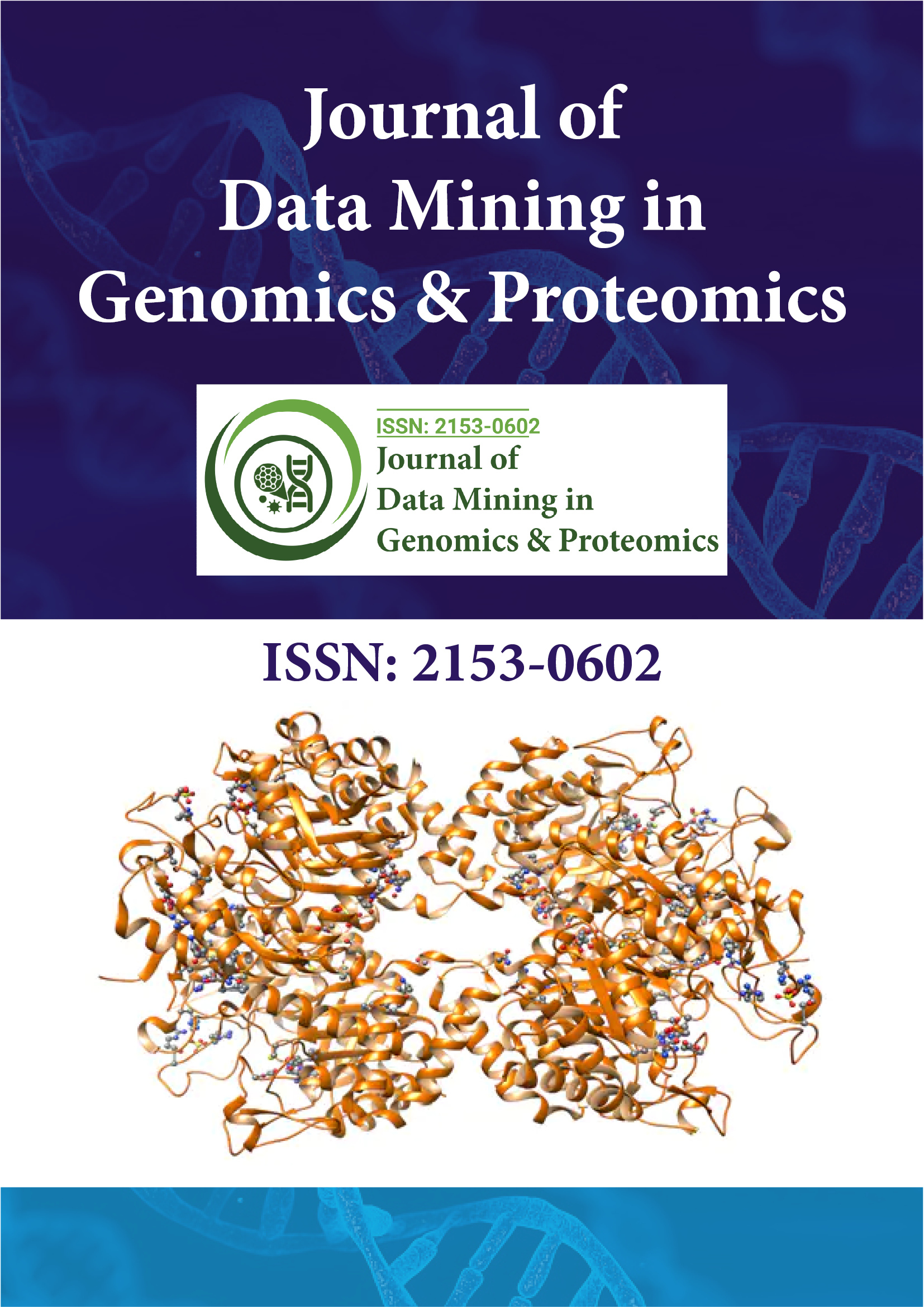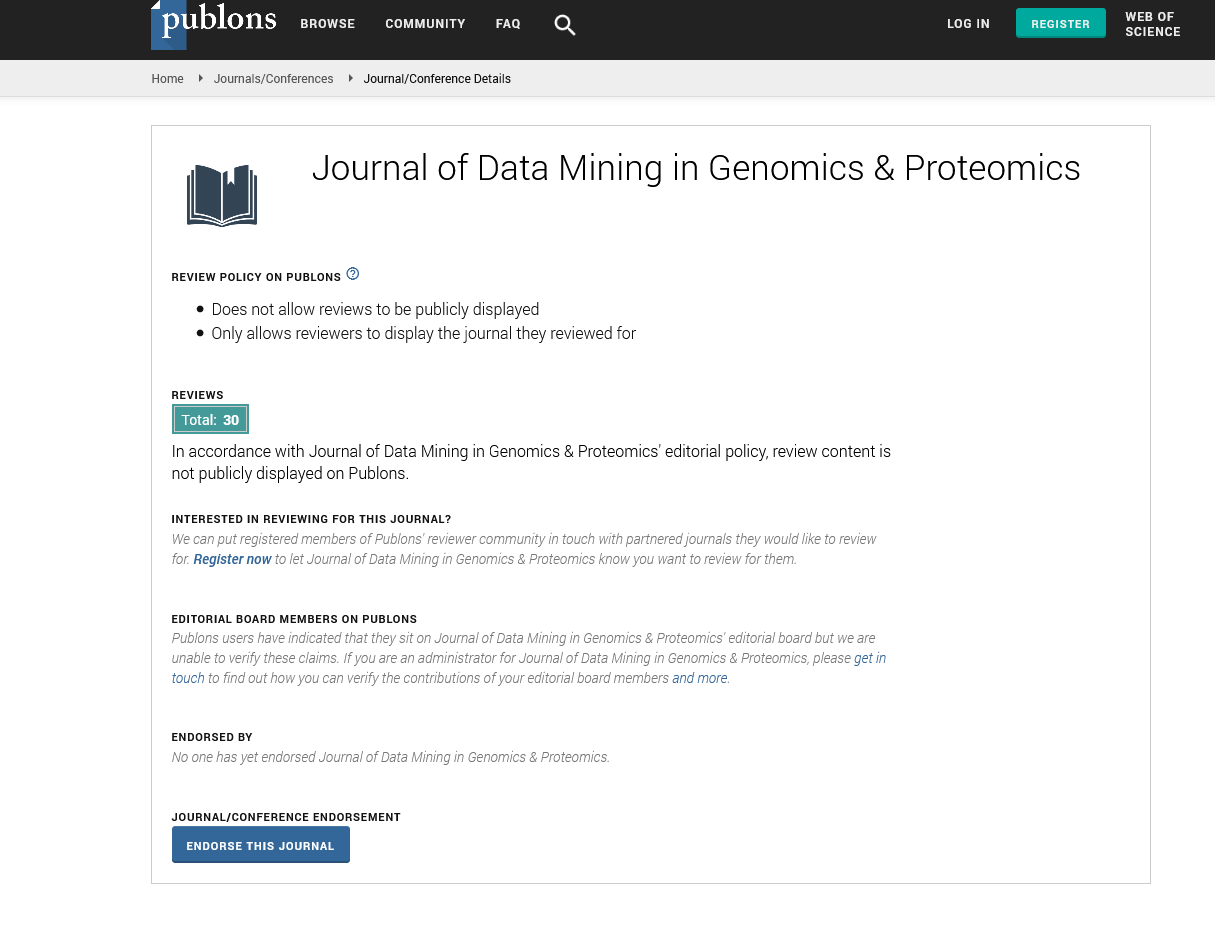Indexed In
- Academic Journals Database
- Open J Gate
- Genamics JournalSeek
- JournalTOCs
- ResearchBible
- Ulrich's Periodicals Directory
- Electronic Journals Library
- RefSeek
- Hamdard University
- EBSCO A-Z
- OCLC- WorldCat
- Scholarsteer
- SWB online catalog
- Virtual Library of Biology (vifabio)
- Publons
- MIAR
- Geneva Foundation for Medical Education and Research
- Euro Pub
- Google Scholar
Useful Links
Share This Page
Journal Flyer

Open Access Journals
- Agri and Aquaculture
- Biochemistry
- Bioinformatics & Systems Biology
- Business & Management
- Chemistry
- Clinical Sciences
- Engineering
- Food & Nutrition
- General Science
- Genetics & Molecular Biology
- Immunology & Microbiology
- Medical Sciences
- Neuroscience & Psychology
- Nursing & Health Care
- Pharmaceutical Sciences
Opinion Article - (2024) Volume 15, Issue 3
The Impact of Single-Cell Genomics on Forensic Science Advancements
Francesco Milani*Received: 21-Aug-2024, Manuscript No. JDMGP-24-27263; Editor assigned: 23-Aug-2024, Pre QC No. JDMGP-24-27263 (PQ); Reviewed: 06-Sep-2024, QC No. JDMGP-24-27263; Revised: 13-Sep-2024, Manuscript No. JDMGP-24-27263 (R); Published: 20-Sep-2024, DOI: 10.4172/2153-0602.24.15.352
Description
In the area of forensic science, technological advancements have consistently driven improvements in the accuracy and efficiency of evidence analysis. One of the most potential developments in recent years is the advent of single-cell genomics. This innovative approach allows scientists to analyze the genome of an individual cell, providing unprecedented resolution in understanding genetic information. The ability to examine genomic material from individual cells opens new possibilities for forensics, especially when dealing with complex or degraded samples where traditional DNA profiling methods may fall short. This article explores the major applications of single-cell genomics in forensic science, highlighting its transformative impact on solving crimes, identifying individuals and advancing justice.
Single-cell genomics: An overview
Single-cell genomics refers to the study of the genome at the level of a single cell, as opposed to traditional methods that require bulk DNA from many cells. This field has gained momentum due to improvements in technologies like Next-Generation Sequencing (NGS), microfluidics and single-cell isolation techniques. By isolating and amplifying the DNA of individual cells, forensic scientists can now analyze genetic material even from minute or degraded samples that were previously considered unsuitable for analysis.
In forensic science, DNA evidence has long been a fundamental for identifying individuals and solving cases. However, standard forensic DNA analysis typically requires a minimum quantity of high-quality DNA, which can be challenging to obtain from crime scenes where biological material may be scarce, damaged, or mixed with contaminants. Single-cell genomics overcomes these limitations by enabling the recovery of genetic information from individual cells, no matter how small or degraded the sample.
Solving cases with degraded or limited DNA samples
One of the major challenges in forensic science is the degradation of DNA at crime scenes. Environmental factors such as heat, moisture and exposure to chemicals can damage DNA, making it difficult to obtain complete profiles through conventional methods. Single-cell genomics, however, offers a solution by allowing forensic experts to focus on individual cells within a sample that may still contain intact DNA, even if the bulk of the sample is degraded.
For example, in cases of historical remains or mass disasters, where DNA samples are often degraded or fragmented, singlecell genomics provides the ability to recover genetic information that can assist in identifying victims or linking perpetrators to the crime scene. By targeting individual cells that have remained protected or less exposed to degrading elements, forensic scientists can extract and analyze valuable genetic information, potentially cracking cases that were previously unsolvable due to the poor condition of DNA evidence.
Resolving mixed DNA samples in complex crime scenes
Another major forensic challenge is the analysis of mixed DNA samples. In violent crimes or public spaces, it is common for biological samples to contain DNA from multiple individuals. Traditional DNA profiling techniques can struggle to distinguish between multiple contributors, especially when one individual’s DNA is present in much smaller amounts compared to others.
Single-cell genomics provides a solution by allowing scientists to isolate individual cells within a mixed sample and profile the DNA separately. By examining each cell independently, forensic scientists can distinguish between the DNA of different individuals, suggesting clear genetic profiles for each contributor. This approach has significant implications for crimes involving multiple suspects, such as sexual assault cases, where DNA mixtures can be particularly complex.
Forensic laboratories can use single-cell genomics to analyze epithelial cells, sperm cells, or other types of cells found in a mixed sample to ensure that each individual’s DNA is accurately identified. This ability not only improves the accuracy of forensic analysis but also strengthens the evidence in legal proceedings by minimizing the risk of misidentification.
Single-cell genomics in touch DNA analysis
"Touch DNA" refers to the small amounts of genetic material left behind when an individual touches an object, such as a weapon, door handle, or piece of clothing. Touch DNA is often very limited in quantity, making it difficult to analyze with traditional DNA profiling methods. Single-cell genomics offers a new method for maximizing the utility of touch DNA evidence.
With the ability to extract DNA from even a single cell, forensic scientists can now analyze trace evidence more effectively. This could be particularly useful in cases where the suspect has not left behind visible biological material, such as blood or saliva, but may have transferred skin cells or other trace amounts of DNA through physical contact. Single-cell genomics allows for the recovery of genetic material from these sparse sources, increasing the likelihood of obtaining a usable DNA profile from touch DNA samples.
Enhancing cold case investigations
Cold cases, where forensic evidence remains unsolved for years or decades, often involve degraded DNA or complex sample mixtures that were beyond the capabilities of earlier forensic technologies. Single-cell genomics is playing an increasingly important role in revisiting these cases, where modern techniques can now be applied to old evidence.
Forensic laboratories can reanalyze evidence using single-cell genomics, extracting new genetic insights from previously unyielding samples. In doing so, cold case investigations may benefit from a new chance to identify suspects, exonerate the innocent, or provide closure to victims' families. By targeting even minute quantities of DNA, single-cell genomics opens a new frontier in the resolution of long-standing forensic puzzles.
Identifying individual cells in tissue samples
In forensic cases involving tissue samples such as those from bones, hair follicles, or other biological material single-cell genomics enables scientists to distinguish between different cell types. This ability is valuable in forensic pathology, where identifying specific cells can offer insights into the time since death, the origin of the tissue, or the health of the individual prior to death. For example, analyzing the genomic integrity of specific cells from a victim’s body can help reconstruct the circumstances of death, assisting investigators in piecing together events at the crime scene.
Citation: Milani F (2024). The Impact of Single-Cell Genomics on Forensic Science Advancements. J Data Mining Genomics Proteomics. 15:352.
Copyright: © 2024 Milani F. This is an open-access article distributed under the terms of the Creative Commons Attribution License, which permits unrestricted use, distribution, and reproduction in any medium, provided the original author and source are credited.

